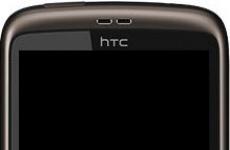Htc desire a8181 firmware 4.0. Overview of alternative firmware HTC Desire A8181 Bravo
Having bought a not cheap device, you always want to squeeze the maximum out of it, because it was not just bought for calls, especially when it comes to HTC, there are more alternative firmware for these smartphones than for everyone else.
MIUI 2.4.6 and 2.3.7(Android 2.3 custom UI)
This firmware is different from all the others, after using it, I switch screens out of habit instead of entering the application menu. The firmware is made 1 in 1 for the IOS interface, all applications are located on the desktops, if you remove the shortcut from the desktop, it is removed from the phone, to save space, you can create folders on desktops and drop shortcuts into folders.
- The taskbar has switches for wifi, bluetooth, screen auto-rotate, data transfer, etc. very convenient, no need to go into settings to switch basic functions
- There is immediately root
- The unlock screen has player controls, you can turn on the flashlight by holding the HOME button, you can immediately see missed calls and unread messages, you can go directly to the phone or messages
- There is a built-in firewall for blacklisting numbers, etc., but it works a little crookedly
- Battery life is noticeably longer, but many standard services have been cut out, because of this some specific applications do not work correctly
- There is a delay in response, i.e. you pick up the phone, say ale ale, and only after 2-3 seconds will you be heard, i.e. Microphone does not turn on immediately
- There is a standard means of recording conversations, but only the interlocutor is heard in it, nothing is heard from the microphone, i.e. there is no point to it.
- In some applications, for example, in QIP, there are glitches with the display of the interface, the buttons are spreading, etc.
RUHD 3.0.1 (Android 2.3 and Sense 3.5)
 Here we have almost stock firmware, but with many useful things, and also Sense 3.5 and updated applications. When you first start the firmware, we are asked which programs to install and which are not needed, many unnecessary applications have been cut out. But the firmware is a little heavy for the device.
Here we have almost stock firmware, but with many useful things, and also Sense 3.5 and updated applications. When you first start the firmware, we are asked which programs to install and which are not needed, many unnecessary applications have been cut out. But the firmware is a little heavy for the device.
- There is a built-in processor frequency control tool, you can make the frequency higher than the nominal one, or vice versa, you can lower it to save battery, you can assign processor frequency profiles depending on the battery charge, for example, if 10% is left, then it is logical to reduce the frequency to 128 MHz, endure dullness, but but stay connected.
- In the phone shutdown menu there are additional items silent mode, vibration mode, airplane mode, turning off mobile Internet
- From the lock screen, you can directly open Phone, Mail, Camera, Messages
- There is almost no delay in response (about half a second)
- The camera is working fine
- The interface is responsive, but slightly inferior in speed even to the standard one, let alone MIUI, Sense 3.5 is heavy, eats a lot of RAM
- The taskbar has switches almost like in MIUI
- There are standard tools for blocking ads, using windows network resources, and much more.
Nikez Lente 1.0.1a6 (Android 4 and Standard UI)

The firmware is at the beta stage, I installed it for the sake of interest, at the moment all custom firmware on Android 4 does not work quite correctly
- There is a significant delay in the response, just like not MIUI
- The interface is a little blunt, this is due to the curved 2d acceleration, but they say a new custom kernel will be released soon and the situation will improve
- From the shutdown screen, you can go directly to BootLoader or Recovery
- There are no switches in the taskbar like on MIUI and RUHD
- Naturally, the interface of the fourth android is very interesting and convenient
Many users specifically install firmware without a proprietary shell - Sense - on their HTC smartphones in order to free up more memory, get rid of brakes, install other launchers. But there are those who like HTC Sense and you can understand them, because the shell from HTC is rightfully considered the best interface from the manufacturer of Android devices. In this post, we will look at the best way to get custom firmware on your HTC Desire with the latest version of HTC Sense, which is used on top-end HTC Sensation series smartphones (Original, XL, XE) - Runnymede and RuHD.
Runnymede AIO Firmware

It is the most popular custom firmware with Sense shell for HTC Desire. Thanks to the huge community on xda and programmers with direct hands, the firmware really boggles the mind with the beauty of Sense 3.5 and the speed of work.
Peculiarities Runnymede for Desire:
- The firmware is based on the official HTC Sensation XL firmware 1.22.461.2 : Android 2.3.5 with shell HTC Sense 3.5
- Full version of Sense 3.5 including everything 3D widgets and effects.
- RCMix3D Tweaks: special settings menu for lockscreen, statusbar, processor and system tweaks and many other system settings.
- Built-in App2SD to transfer any application to the card
- Deodexed & zip aligned
- init.d support
- Complete system optimization for best performance with all Sense 3.5 effects
- Multilingual
- The ability to configure unlocking and wakeups by pressing the trackpad.
- Superuser 3.0.7
- Ability to fine-tune the power and frequency of the processor (Daemon controller, IncrediControl)
- Graphic touch installer
- Beat Audio
Video presentation of the firmware Runnymede for HTC Desire
Requirements Runnymede for HTC Desire

Installation Runnymede for HTC Desire
- Make sure that your Desire meets all the requirements described above, they are all required for the correct operation of Runnymede (partition table, s-off, ext partition), if you are installing custom firmware for the first time and are not confident in your abilities, you .
- Runnymede-
- Install .zip from SD card in recovery)
- The graphical installer will load, follow the instructions on the screen
RuHD Firmware
The RuHD firmware for HTC Desire is essentially a domestic modification or version of Runnymede, some goodies have been added, something has been removed, tweaks and scripts from domestic craftsmen have been added.
RuHD Features for Desire: 
- Android 2.3.5 and HTC Sense 3.5
- Beat bass & Cloud
- Works on WiFi N networks
- Integration with HTCSense.com
- All languages except English and Russian have been removed, Russian translation has been improved wherever possible.
- Installation completely in / system (free memory - 15mb), does not require ext partition
- The firmware includes su, busybox, terminfo, passwd and group
- hosts are set to clipping ads (no need to install third-party applications AdFree, etc.)
- APP2SD+- the ability to transfer applications to a memory card (need ext partition!)
- Optimized boot, sqlite defrag at startup, zipallign
- Availability of processor profiles
- Support OTA updates and installing firmware additions of one branch
- Additional RuHD settings menu - system tweaks, processor controls, advanced interface settings (similar to the RCMix3D Tweaks menu in Runnymede)
RuHD Requirements for Desire:
- Desirable, but required: S-OFF, ext-partition on the map
- The latest version of the radio module (available on the firmware website, you can flash it after installing the firmware)
 Installing RuHD for Desire:
Installing RuHD for Desire:
- Make sure that your Desire meets all the requirements described above, all of them are required for the correct operation of RuHD, if you are installing custom firmware for the first time and are not confident in your abilities, you.
- Back up your data (for example with )
- If you are switching from another firmware, then before starting you need to do a full wipe! (full wipe - data\factory reset in recovery)
- If you want to update the version RuHD- clean cache and dalvik cache, / system and / boot through recovery
- Download the firmware from the links above, put the zip archive in the root of the card and flash from the recovery ( Install .zip from SD card in recovery)
- Follow the instructions on the screen
Conclusion
Both firmwares are very high quality and stable, great for everyday use. The main and perhaps the only drawback of both firmwares is excessive power consumption, but this, of course, is the price for all the Sense 3.5 chips, compared to other custom firmware for Desire without Sense (for example), the batteries last 10-15% less. But on the other hand, the speed of both firmwares is on top, the developers really managed to achieve almost perfect smoothness and speed of work.

Best firmware for HTC Desire with Sense shell - Runnymede and RuHD:
rating 80 out of 80 based on 80 ratings.
There are 80 reviews in total.
I am a happy owner of HTC Desire A8181. When I bought it a year ago, my joy knew no bounds. After a while, Samsung Galaxy S, HTC Desire HD, HTC Incredible S, etc. came out. and then one fine day the era of "monsters" began on 2 cores with powerful graphic coprocessors (I think it makes no sense to list models)
I realized that I had a phone in my hands, which I bought “gray” for almost $ 700, but then it was a “monster”, now it is hardly relevant against the backdrop of fresh interfaces and high performance. Since the warranty came to an end, I decided not to waste time and squeeze out everything that was possible from my "desire". First of all, I got the rights ROOT, then S-OFF. I explain:

ROOT- in other words, “granting super-user rights”, they allow you to feel freer in managing your phone, work with applications, almost all of them (with ROOT rights) become on a memory card; the ability to create Ext (the system will see the allocated space on the memory card as part of the phone’s memory) and Swap (a partition that works as a “paging file”, as it creates additional RAM) partitions.
S-OFF- Security OFF - turn off the protection of the phone to "expand the possibilities" of working with it.
Then I flashed the latest version of the radio module (responsible for the signal quality in the GSM / CDMA network, the stability of Wi-Fi). Then there was the question (the most interesting) of installing custom (modified / ported from another device, more colorful / productive) firmware.
In this article I will talk about 4 firmwares that on my HTC Desire proved to be the brightest and differed from other firmwares in a number of "features", "usefulness" and "goodies". Let's get started.
In order not to clutter up the blog with huge screenshots, you can view them slightly reduced in flash. Screens "in full growth" !
MIUI. (Now relevant, personally for me.FCR_MIUI_R29.3, but there are many modifications of this firmware)

The appearance of the firmware is beautifully "licked" from the iphone. There is no NTS Sense in the firmware. The settings menu looks the same as in iphone. The ability to customize themes, the background of not only the desktop, but also the lock screen. The ability to jump directly to the phone (dialer) / sms / just unlock the screen on the lock screen (by the way, this function was used in MIUI earlier than in Sense from NTS), there is a scroll bar at the bottom of the desktop - under it is a block of dedicated programs that you can fill yourself / edit
Performance. The firmware does not slow down in any way, does not freeze. Based on the test results in Quadrant, NeoCore, Benchmark AnTuTu, we can conclude that MIUI is a very productive and fast firmware!
Personal opinion: the firmware is original, brightly different from others, has a peculiar look, has high performance and its own branded add-ons. Those who have nothing against the iphone and its interface - I advise you to take a closer look!
Oxygen. (I have tested oxygen-2.1.4)
 Before us is what is called "naked" Android. There is no HTC Sense interface (a sacrifice towards performance). The firmware looks insufficient - everything was pulled out of it - and NTS Sense, and all the built-in programs, and even the set of widgets is limited. But this is the whole point of Oxygen - this is the firmware that the user "cuts" on his own, while installing only those applications and widgets that he needs.
Before us is what is called "naked" Android. There is no HTC Sense interface (a sacrifice towards performance). The firmware looks insufficient - everything was pulled out of it - and NTS Sense, and all the built-in programs, and even the set of widgets is limited. But this is the whole point of Oxygen - this is the firmware that the user "cuts" on his own, while installing only those applications and widgets that he needs.
It is also possible to install additional those, using which the device changes before our eyes (I used Oceanis_oxygenv2-6). There is a specialized menu from Oxygen in which you can make serious settings regarding the phone.
Performance. The firmware has proven itself well, really fast, which is why it is popular.
Personal opinion: the ability to adjust the device for yourself, everything that could slow down the capabilities of the device is cut out. This is one of the most productive "naked" Androids. Suitable for all those who are chasing performance, who are looking for the most customizable version of the firmware. But in my case, some glitches of the system occurred, then the lower bar of programs disappeared into nowhere, then the phone itself rebooted, in general, it was a little unstable.
Cyanogen Mod 7.
 Before us, again, is “bare” Android, without the HTC Sense interface. The firmware is notable for the fact that it is updated once a day, CyanogenMod 7 has the concept of “nightie” - nightly (frequent update), the guys from this team upgrade the firmware every day, and when they release a stable version, they upload it separately, they call it stable, which logical
Before us, again, is “bare” Android, without the HTC Sense interface. The firmware is notable for the fact that it is updated once a day, CyanogenMod 7 has the concept of “nightie” - nightly (frequent update), the guys from this team upgrade the firmware every day, and when they release a stable version, they upload it separately, they call it stable, which logical
The firmware is also quite productive and very “customizable”, and to the maximum, you even need to install applications from google separately. Fairly fast and stable, unlike Oxygen (perhaps this is only in my case).
Performance. The firmware behaves well both in simple situations and at times of special load. It performed well in tests.
Personal opinion: great alternative to oxygen, frequently updated, stable, fast. Suitable for all speed seekers. In my case, the sound of the conversational speaker went down
RCMixS. (used version RCMixS_v2.1_A2SD_CM7Hboot_TEST4).

This is the brightest and juiciest firmware that I have ever installed. NTS Sense 2.1 + 3.0 is involved here. The firmware is "live", mega-beautiful, but can not boast of performance in any way, unlike the firmware listed above. Everything is compensated by beauty.
Performance. The performance is at a low level, but not lower than on the "native" firmware for HTC Desire. In everyday use of the device, slowness is not felt - poor results are visible only in tests, but not in practice.
Personal opinion. This firmware is just a dream for those who are looking for themselves in firmware with Sense. In it, Sense is not buggy and does not crash, animated wallpapers, weather and active icons on the lock screen - everything works fabulously. NTS Sense 2.1+3.0 only here and only now! It feels like your Desire turns into Sensation, or at least into Incredible S. I still can't get used to it myself.
My verdict
- 1. The most original - MIUI
- 2. The most productive (fast) - MIUI / Oxygen / CyanogenMod 7 (to each his own)
- 3. The most beautiful - RCMixS
Of course, there are still a huge number of firmware for HTC Desire, and all of them are interesting in their own way. In some more interesting interface, in another - the camera behaves better and shoots HD video, thirdly, something else is possible. Everyone chooses what he likes more, sets his own priorities. I showed an example on my HTC Desire, but there are similar firmwares (which radically change the impression about the device) for almost every Android smartphone, so I wish you good luck with flashing!
Thank you all for your attention, I hope my work helped someone, it was just interesting for someone, in any case - good luck to everyone!
In this article, we will tell you how to install standard and modified firmware on HTC smartphones.
Important! All responsibility for the actions taken lies solely with you. Without knowledge, experience and understanding of the risks, do not flash the phone, but rather study more information.
The standard way to update the firmware
This method is standard for all Android smartphones. Allows you to get the latest version of the system. The update process is safe and primarily aimed at novice users. This will install the update, subject to availability from the manufacturer. If the manufacturer has stopped supporting the smartphone, you will not receive the update.
For detailed instructions on updating, see the subheading.
Installing the RUU image
With the help of the RUU image, the smartphone returns to its standard state, the stock firmware is flashed. All user settings are reset only if S-On protection is enabled. With S-Off, data is retained. Additionally, it is recommended to remove the SIM and MicroSD card for the duration of the firmware.
If S-On protection is enabled, the bootloader must be in the closed state - LOCKED, otherwise error 155 will appear in the process. In this case, close the bootloader with the command fastboot oem lock.
You can not install the old firmware over the new firmware.
Before flashing, it is important to check the compliance of the CID and MID of the smartphone. You can not put European firmware on Chinese.
Algorithm of actions for RUU.exe:
- Boot your smartphone in bootloader mode.
- Connect to a computer where drivers, ADB and Fastboot are installed.
- When the message “fastboot usb” appears on the screen, run the RUU.exe utility on the computer, then follow the instructions of the installer.
Algorithm of actions for RUU.zip:
- Download the HTC fastbbot app. Place the utility in the ADB folder.
- Connect your smartphone to your computer.
- Open a command prompt and type fastboot oem rebootRUU.
- Next - htc_fastboot flash zip
/rom.zip, where XXXXX is the path to the firmware.
Installing firmware.zip
Another way to install stock firmware. The requirements are the same as for the RUU image.
Action algorithm:
- Download the appropriate firmware, then place the archive in the folder with fastboot. Change the name of the firmware to "firmware".
- Boot the device into bootloader mode. Connect to PC.
- Open a command prompt. Enter the path to the folder where fastboot is located. for instance cd c:\androfon.
- Further fastboot oem rebootRUU.
- After the phone reboots and HTC appears, enter . An error message will appear on the screen, this is normal, enter again fastboot flash zip firmware.zip.
- When the firmware is completed, enter fastboot reboot.
Installing custom firmware
Custom firmware is installed via third-party recovery - or. Pre-required. If TWRP is installed on your device, follow the instructions:

Important! Before installing custom firmware, be sure to ask about the additional conditions for installing the image.
TWRP installation instructions
Important! This installation method is applicable for older devices, since in the latest models, installation is done through Magisk. Before installing TWRP, be sure to check which method is relevant for your model.
Action algorithm:
- Download TWRP, rename recovery. If you downloaded the archive, unzip the archive and then rename the recovery.
- Place the file in the adb and fastboot folder, for example in the C:\Androfon folder.
- Connect your phone to PC.
- Open a command prompt. Put your phone in download mode - adb reboot download.
- Enter CD C:\Androfon.
- Then fastboot flash recovery recovery.img. You may need to clear the cache, check this before installing. The cleanup command is fastboot erase cache.
- To enter recovery, run the bootloader, where select the flashed recovery.
Conclusion
The article describes how to flash htc smartphones with official and custom firmware; How to install TWRP recovery.
If you have any questions or suggestions for corrections and additions, write your comments in the comments.





